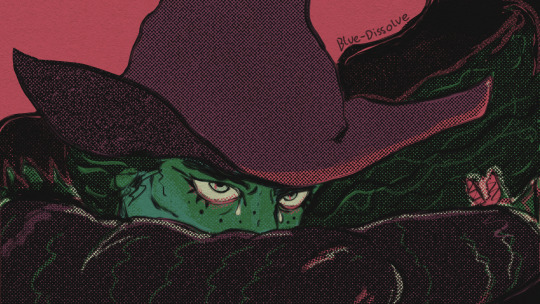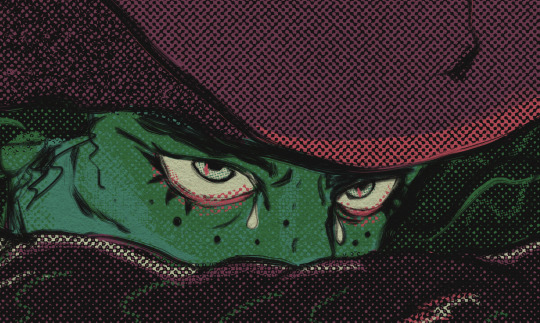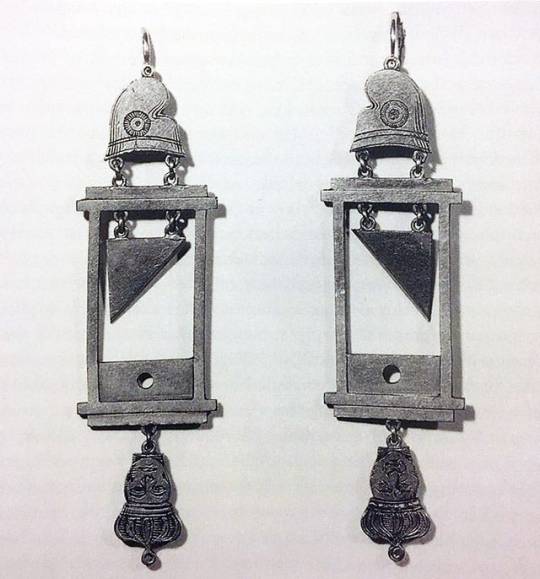Text

Jacket
1790s
The Kyoto Costume Institute
"This women's jacket features a distinctive large turned-down collar with scalloped edges. Metallic large buttons placed in two rows provide accent.
The British lifestyle of enjoying rural life and hunting in natural surroundings also became popular in France, and the clothes became more simplified in and after the 1770s. "Redingotes," or riding coat, which had been popular among men for horse riding or traveling, influenced women's clothes, resulting in sophisticated jackets like this."
173 notes
·
View notes
Photo

The famous “David” sketch: falsely attributed?
The new exhibition Marie-Antoinette, metamorphosis of an image is bringing to light something which has apparently been the subject of discussion in the art world for some time: the famous sketch of Marie Antoinette on her way to the guillotine, in a loose white gown, eyes downcast, face set in a frown; a sketch which has inspired a thousand bits of prose and contrasting opinions about the intention of the artist… may not have been done by David or drawn from life at all.
According to the exhibition, the famous drawing depicting Marie Antoinette on her way to the guillotine was not drawn by Jacques Louis-David, and possibly was never drawn from life. Multiple art experts (including an expert on David’s work, Philippe Bordes and Xavier Salmon, art historian and curator at the Louvre) agree that the sketch does not correspond to David’s work or style; there is also no outside evidence that the sketch was done by David aside from a single attribution.
The alleged mis-attribution dates back to the original owner of the drawing, Jean-Louis Soulavie, who penned the description underneath the original drawing: “Portrait of Marie Antoinette queen of France led to death, drawn in pen by David, spectator of the scene, and placed on the window of Citizen Jullien [Rosalie Ducrollay]; wife of representative Jullien, who told me this story.”
Xavier Salmon proposed that one possible artist was the famous Vivant Denon; several of Denon’s works have been falsely attributed to David in the past, so this would not be the first. Denon was a friend of David’s as well, and David helped him secure work in revolutionary Paris, though Denon frequently traveled throughout Europe during the revolution. Denon would have drawn the work from scratch as Denon was not back in Paris until mid-December 1793, and could not have been an eyewitness.
I have ordered the exhibition catalog, so I am hoping it has more information about the possible mis-attribution, and if it does I will definitely post an update!
160 notes
·
View notes
Text
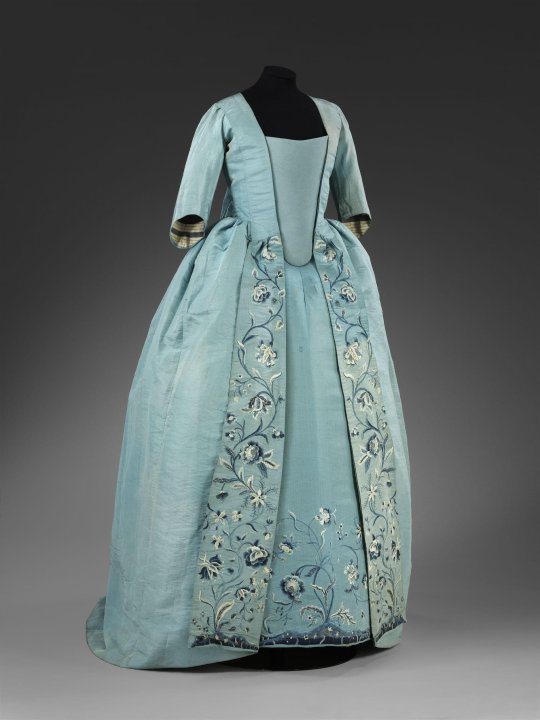

Robe à la française
1750s; Altered 1780s & Late 19th Century
France & England
The ensemble was probably made as a sack and petticoat in the 1750s. In the 1780s, the sack was updated in style. A waist seam was probably added, the skirts reconfigured, and sleeve ruffles removed. The half-stomachers were added at this time and the bodice fronts relined. The back lacing was reconfigured and more eyelets worked.
The ensemble was altered for fancy dress in the late 19th century. Hooks and eyes were added to the bodice stomacher fronts and machine-lace ruffles to the sleeves. The petticoat may have been unpicked at this point.
The petticoat was gathered onto a cotton band after acquisition for Museum display. (V&A)
Victoria & Albert Museum (Accession Number: CIRC.157-1920)
1K notes
·
View notes
Photo
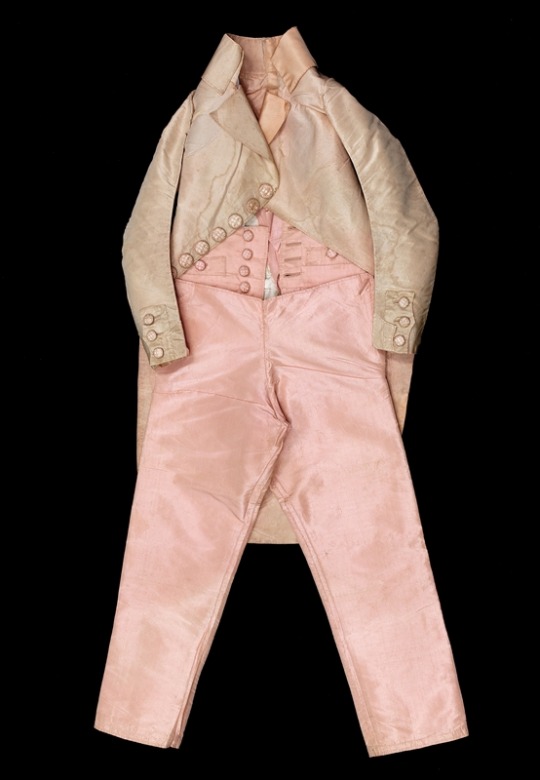
Coat and trousers worn by Louis XVII, Louis Charles de France, circa 1792
- Musee de la Mode
197 notes
·
View notes
Photo
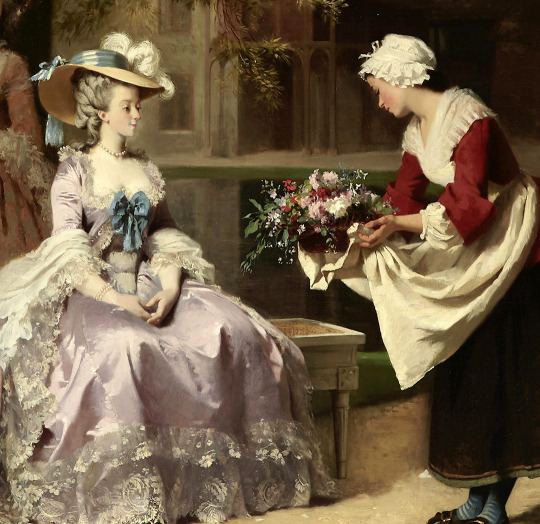
Detail from ‘Marie Antoinette at the Petit Trianon’ by Joseph Caraud. [source: Bonhams, ‘European Fine Living,’ April 27 201]
221 notes
·
View notes
Photo
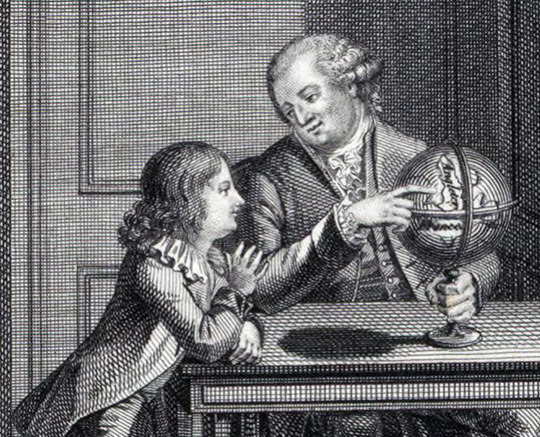
I beg my son, if he has the misfortune to become king, to reflect that he owes himself wholly to the welfare of his co-citizens; that he ought to forget all hatred and all resentment, especially that which relates to the misfortunes and griefs that I have borne; that he cannot make the happiness of the people except by reigning according to the laws; but, at the same time, that a king cannot make the laws respected and do the good which is in his heart to do unless he has the necessary authority; otherwise, being fettered in his operations and inspiring no respect, he is more harmful than useful.
–Louis XVI, Last Will and Testament
70 notes
·
View notes
Photo
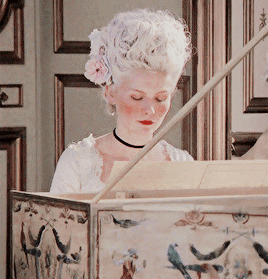

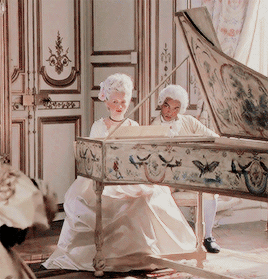
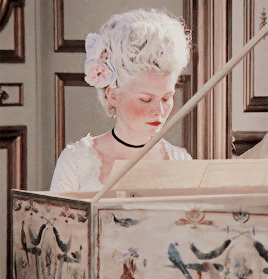
♡ Marie Antoinette had a special affection for music and the arts in general, in which she offered patronage to. According to the Première femme de Chambre, Madame Campan, “music was the accomplishment in which the Queen most delighted. She did not play well on any instrument, but she had become able to read at sight like a first-rate professor.” Marie’s personal library contained plenty of music books, from sonatas, operas and harpsichord music, in which case was one of her favourite instruments to play alongside the harp. ♡
3K notes
·
View notes
Photo
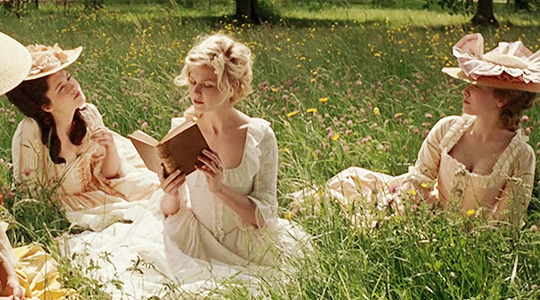
A (very) non-exhaustive list of English-language books about Marie Antoinette. In no particular order.
General Biographies
Marie Antoinette: The Tragic Queen by Dorothy Moulton Mayer
Marie Antoinette by Desmond Seward
Marie Antoinette: The Journey by Antonia Fraser
Marie Antoinette: The Last Queen of France by Évelyne Lever
Marie Antoinette by Joan Haslip
Marie Antoinette by John Hearsey
Marie Antoinette by Philippe Huisman
The Indomitable Marie Antoinette by Simone Bertière
Marie Antoinette: Portrait of an Average Woman by Stefan Zweig
Louis and Antoinette by Vincent Cronin
Marie Antoinette by Andre Castelot
Youth Biographies
Marie Antoinette and the Decline of French Monarchy by Nancy Lotz
Spilling the Beans on Marie Antoinette by Mick Gowar
Marie Antoinette by Katie Daynes
Who Was Marie Antoinette? by Dana Meachen Rau
Marie Antoinette, Queen of France by Mary Englar
Marie Antoinette, Fashionable Queen or Greedy Royal? by Sarah Powers Webb
Marie Antoinette, Madame Deficit by Liz Hockinson
Marie Antoinette: Controversial Queen of France by Heather E. Schwartz
Marie Antoinette’s Versailles & Petit Trianon Non-Fiction
Marie-Antoinette and the Last Garden at Versailles by Christain Duvernois
Marie-Antoinette and the Petit Trianon at Versailles by Martin Chapman
The Private Realm of Marie Antoinette by Marie-France Boyer
From Marie Antoinette’s Garden: An Eighteenth-Century Horticultural Album by Elisabeth de Feydeau
Marie Antoinette’s Versailles by Cécile Berly
Dairy Queens: The Politics of Pastoral Architecture by Meredith Martin
Other Non-Fiction
Marie Antoinette: Writings on the Body of a Queen edited by Dena Goodman
The Wicked Queen: The Origins of the Myth of Marie Antoinette by Chantal Thomas
Queen of Fashion: What Marie Antoinette Wore to the Revolution by Carolyn Weber
The Queen’s Necklace: Marie Antoinette and the Scandal that Shocked and Mystified France by Frances Mossiker
Last Days of Marie Antoinette: An Historical Sketch by Ronald Sutherland Gower
Queenship and Revolution in Early Modern Europe: Henrietta Maria and Marie Antoinette by Carolyn Harris
Marie-Antoinette Style by Adrien Goetz
The Fatal Friendship: Marie Antoinette, Count Fersen and the Flight to Varennes by Stanley Loomis
A Day with Marie Antoinette by Hélène Delalex
Secrets of Marie Antoinette: A Collection of Letters by Olivier Bernier
Fiction
Farewell, My Queen by Chantal Thomas
Flaunting, Extravagant Queen by Jean Plaidy
Marie Antoinette Trilogy by Juliet Grey
The Queen’s Confession by Victoria Holt
Abundance: A Novel of Marie Antoinette by Sena Jeter Naslund
Versailles: A Novel by Kathryn Davis
Marie Antoinette by F.W. Kenyon
Youth Fiction
Marie Antoinette, Princess of Versailles by Kathryn Lasky
The Secret Diary of a Princess by Melanie Clegg
The Bad Queen: Rules and Instructions for Marie Antoinette by Carolyn Meyer
Marie Antoinette, Phantom Queen by Annie Goetzinger
Marie Antoinette, Serial Killer by Katie Alender
The Time-Traveling Fashionista at the Court of Marie Antoinette by Bianca Turetsky
Moi & Marie Antoinette by Lynn Cullen
201 notes
·
View notes
Photo
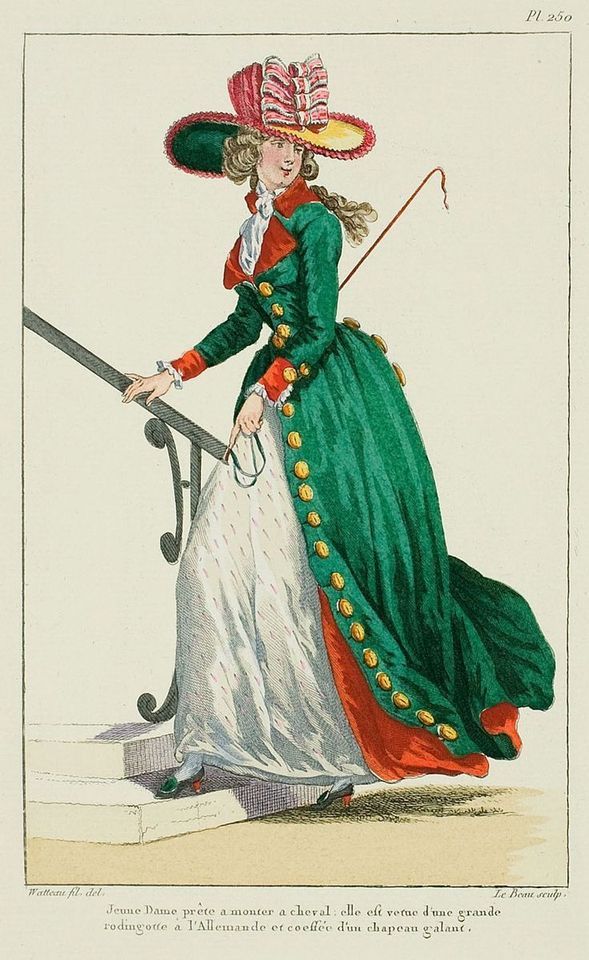
Centuries later, this active-wear fashion plate is still doing its work on me. Where can I commission such an exquisite frock?
8 notes
·
View notes
Photo
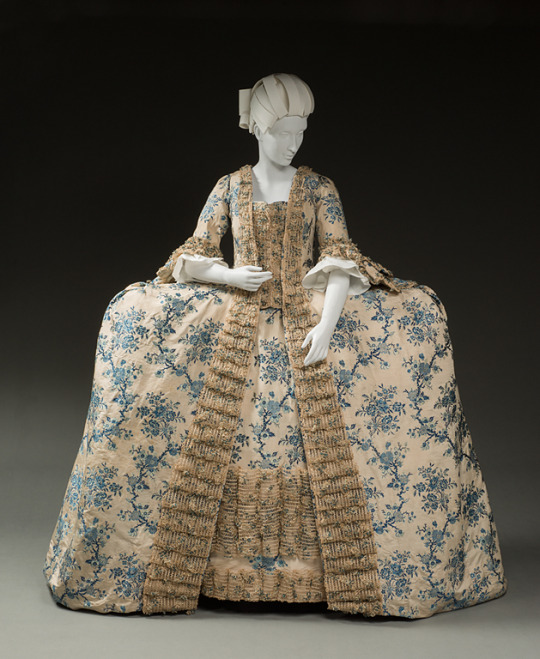
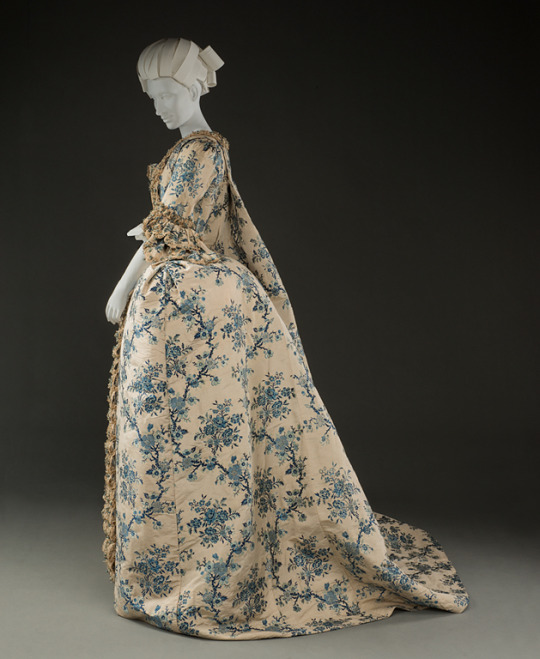
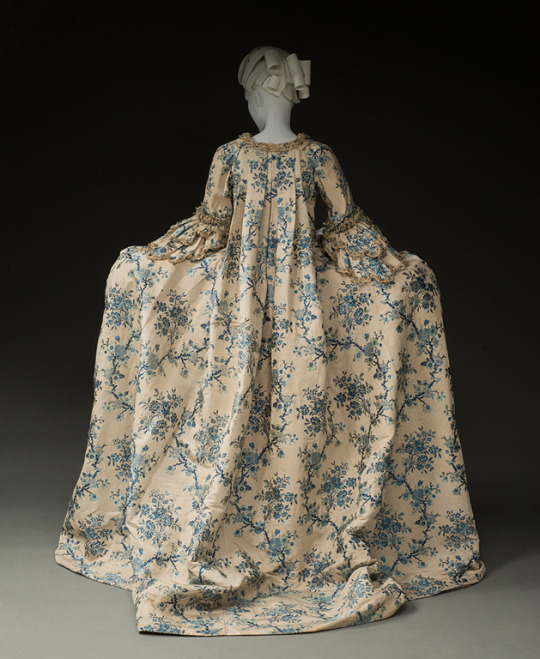
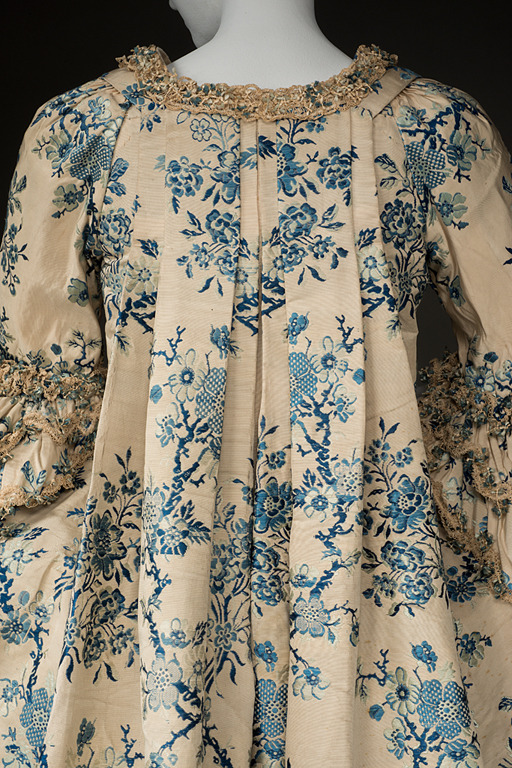
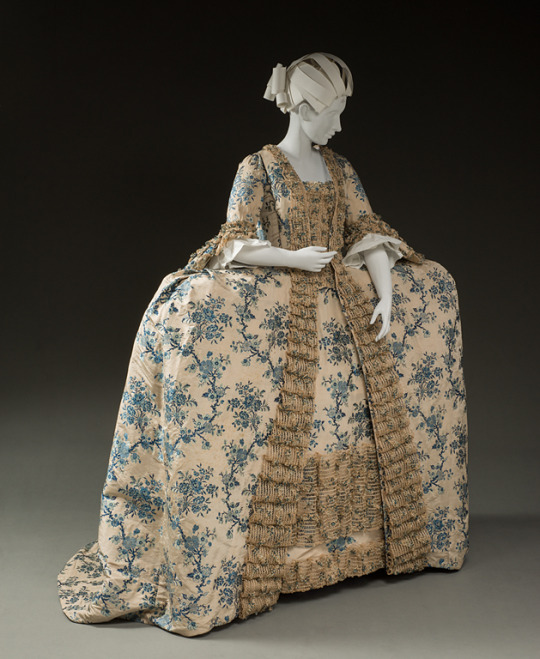
• Robe à la Française: Robe and petticoat. Date: 1765-1770 Place of origin: Textile: China or Amsterdam; Holland; Garment: France or Amsterdam Medium:Textile: blue and white brocade weave silk (paduasoy?); bleached plain weave linen lining; silk knotted fringe.
410 notes
·
View notes
Quote
According to her biographer Carrolly Erickson, shortly after the guillotine sliced its own bloody version of a necklace into the Queen's throat, well-born women in Paris began tying 'thin red ribbons around their necks as reminders of what they might soon suffer.'
Queen of Fashion: What Marie Antoinette Wore to the Revolution, Caroline Weber (Picador, 2006)
4 notes
·
View notes
